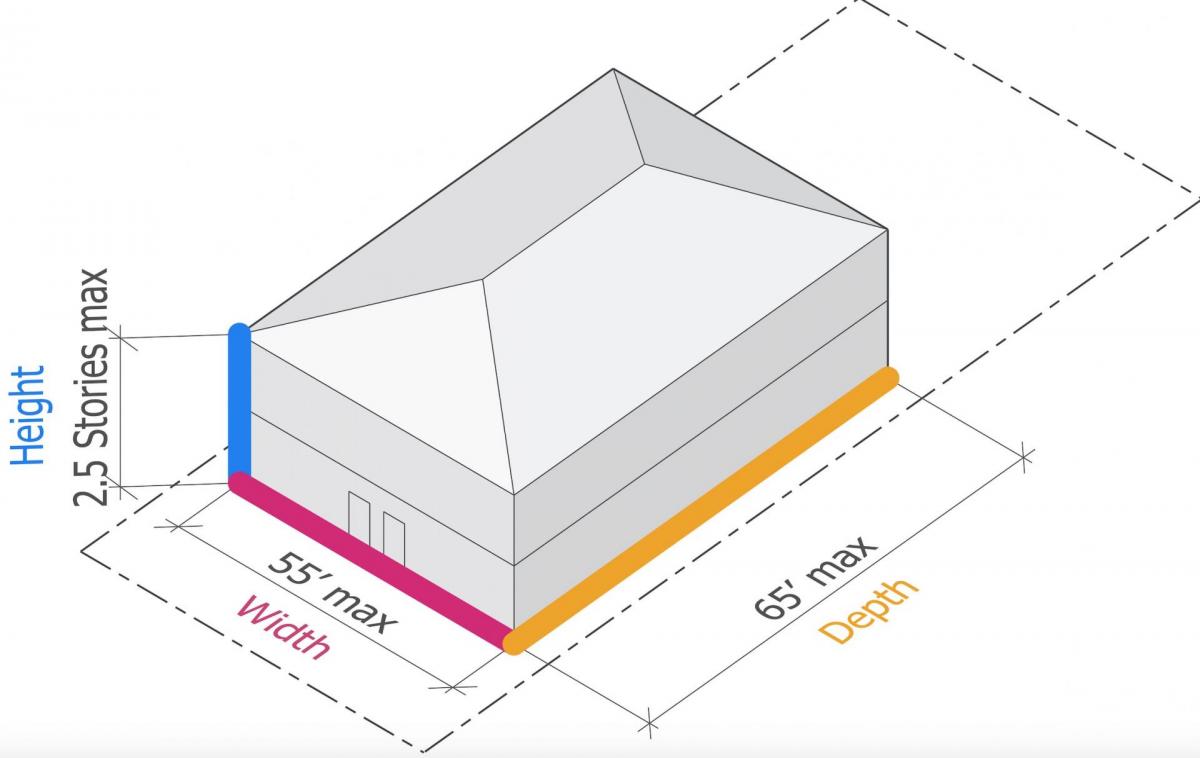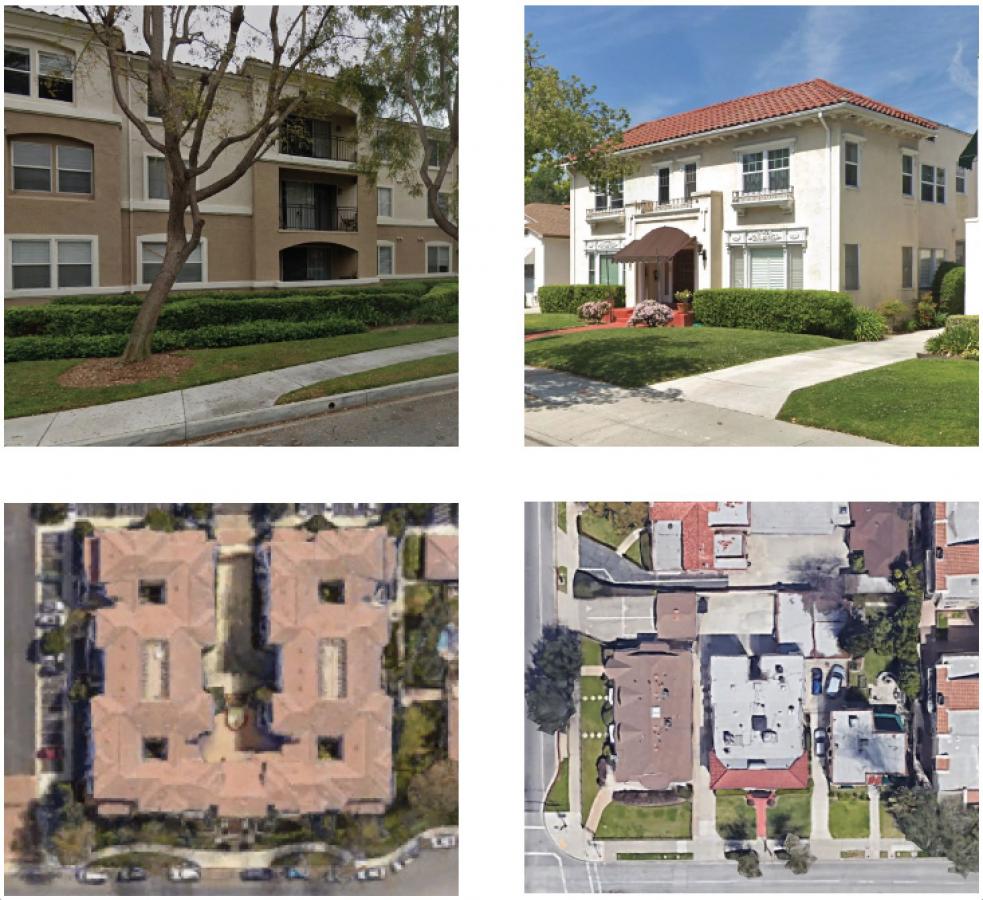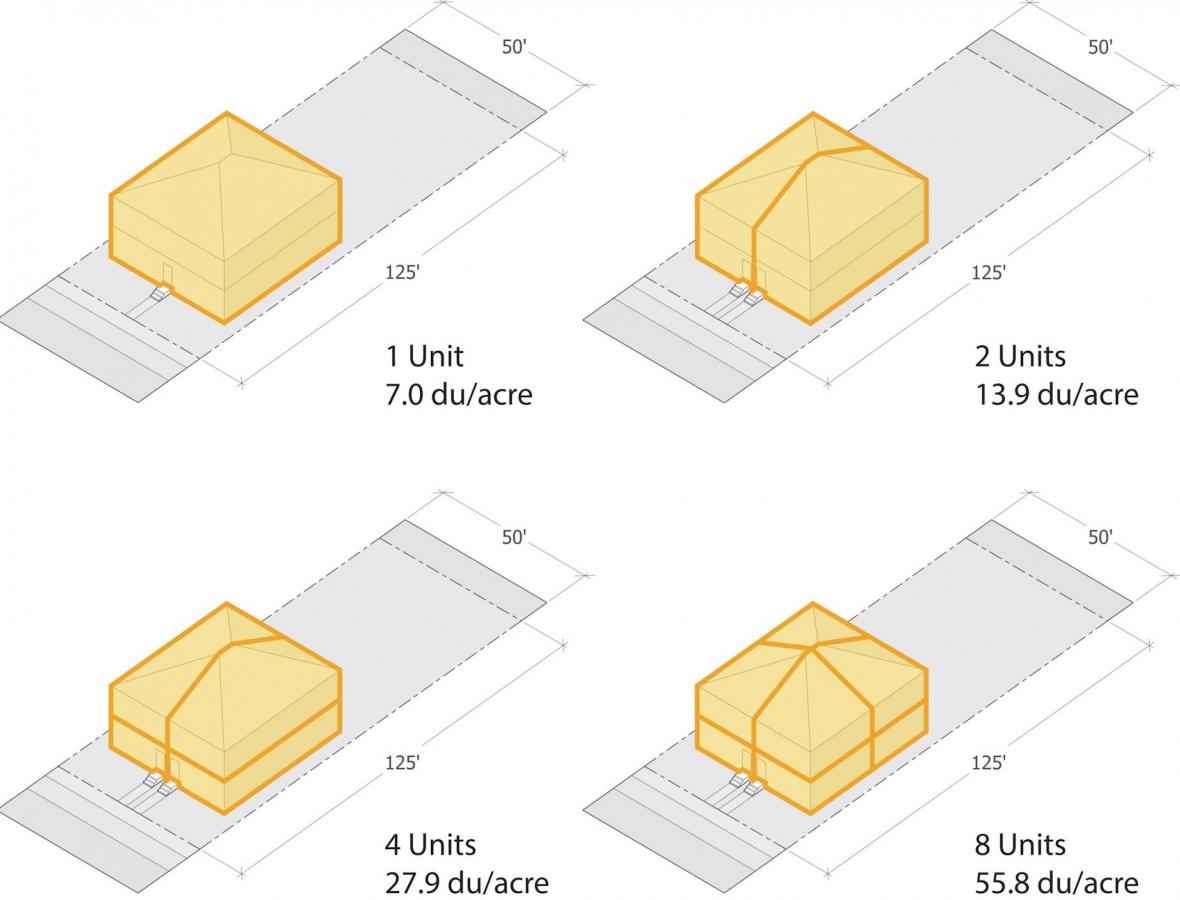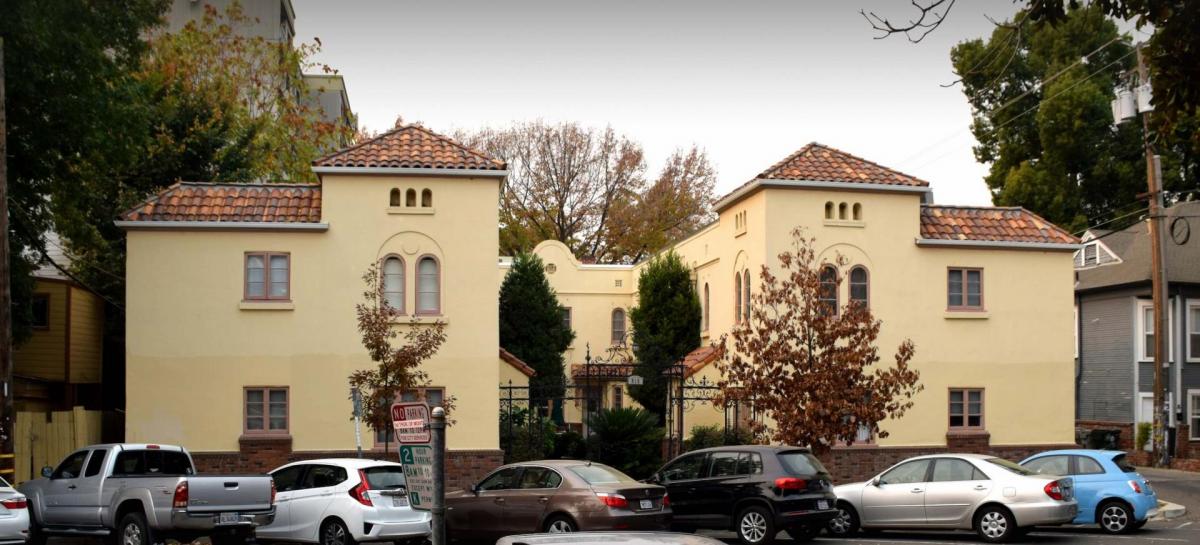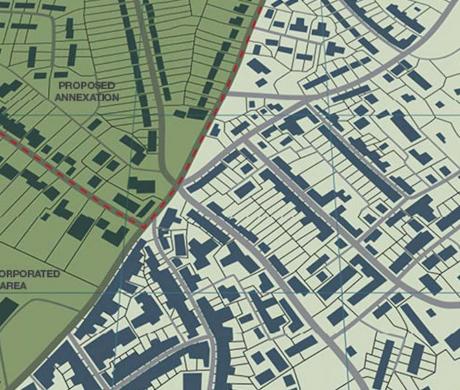How to Ensure That Missing Middle Housing Is Not Missing From Your City’s Policy, Planning, and Zoning
Daniel Parolek is an urban designer and architect with Opticos Design; he can be reached at daniel.parolek@opticosdesign.com. Tony Perez is a senior associate at Opticos Design; he can be reached at tony.perez@opticosdesign.com.
Over the past 10 years, cities and towns nationwide have been taking a step back and rethinking the way they plan and zone to address the growing need for housing. In California, the trend is more significant because of the massive demand for homes. Part of this rethinking involves “missing middle” housing, which continues to attract the attention of a wide range of communities and individuals.
Three key reasons account for the appeal of missing middle housing: it’s a simple approach, it addresses housing choice at the human scale, and best of all, it fits in or near existing neighborhoods far better than large apartment buildings. Missing middle housing types such as duplexes, fourplexes, five- to 10-unit mansion apartments, cottage courts, and courtyard apartments were once — and can be again — an important part of the solution to the housing shortage and could be in every city’s toolbox.
Defining Missing Middle Housing
Missing middle housing is the range of multi-unit or clustered housing types between single-family houses and larger apartment buildings. Unlike other types of buildings that contain multiple units, missing middle types are all “house scale” — that is to say, compatible in scale with single-family homes. Missing middle housing helps to address the growing demand for walkable communities, respond to shifting household demographics, and meet the need for more housing choices at various price points. Such housing can be for rent or for sale. If you walk through most neighborhoods built prior to the 1940s, you will likely find a mix of these housing types thoughtfully integrated on blocks that also have single-family homes. You’ll also notice that these housing types were seamlessly integrated into beautiful, desirable neighborhoods that mostly — but not entirely — consisted of single-family homes. These neighborhoods also have amenities that residents can walk to, such as shopping, restaurants and coffee shops, services, and transit stops.
The term “middle” has a second meaning related to affordability or attainability levels. These types of housing have historically delivered attainable choices to middle-income families without subsidies and continue to play a role in providing homes that are “affordable by design” to the middle-income market segment, which typically straddles 60 to 110 percent of the average median income (this percentage varies by market). This type of housing is labeled “missing” because little has been built in the past 30 to 40 years nationwide due to barriers and disincentives created by some policy and zoning regulations, with the most frequent barriers being maximum density and parking requirements.
Missing middle housing offers a tried and true solution when seeking to address a community’s housing shortage. Cities large and small throughout California are experiencing a “perfect storm” that is creating a growing gap between the housing choices people want and the choices being delivered. According to a 2017 report from the National Association of Realtors, 30 percent of baby boomers and 60 percent of millennials want to live in walkable communities with easy access to shopping, food, services, and transit. Nationally, 30 percent of all households are single person, one in three Americans is age 50 or older, and by 2025, 15 million households will devote more than half their income to housing. As League Past President Jan Arbuckle said, “It doesn’t matter if your city is large or small, rural, suburban, or urban, this is a crisis for every community statewide.” (See “Tales From the Dusty Trail: City Voices on Statewide Issues,” October 2019.) It is going to take more than minor tweaks to address the housing crisis.
Understanding Existing Barriers to Missing Middle Housing
The barriers to missing middle housing include the limitations of planning and regulating with density, zoning, and new land-use designations in General Plans.
Planning and Regulating With Density Has Its Limitations
Planning and zoning systems for housing in nearly every community are based on allowed density (either dwelling units per acre or the square footage of the lot required for each unit). Although this is an established aspect of the development process, this approach inherently works against the creation of smaller, more affordable units and encourages developers to build the largest units the market will accept, which are often high-end, expensive units. And density raises rather than answers questions about scale and compatibility with existing neighborhoods, because it doesn’t ensure predictable built results, as shown in the photo examples (below) of two buildings with the same densities but very different forms.
Contrary to popular belief and prevalent planning practice, California state planning law does not require density-based planning and zoning. It is simply one approach.
Zoning Is Often a Barrier to Delivering Missing Middle Housing
The major barriers within zoning that prevent missing middle housing include missing zoning districts and metrics based on projects on large sites.
Missing zoning districts. Existing zoning districts often jump from allowing one and two units at 35 feet of height to allowing 50-foot-tall, multi-unit buildings with unlimited width and depth. Adding a new zone or two, specifically to enable missing middle housing types, can resolve this issue. The challenge then becomes where to map these new zones. Most often, missing middle housing is most viable in areas currently zoned for single-family homes, or along secondary corridors historically zoned for commercial uses.
Metrics based on projects with large sites complicate smaller-lot infill. Individually or in combination, these regulations often encourage the development of single-family homes on small lots zoned for multi-family and rarely allow for achieving the full density allowed by the zoning district. Regulations typically include densities that are too low, minimum lot sizes that are too large, setbacks that are too large, and off-street parking requirements that are too high.
New Land-Use Designations in General Plans Can Enable Missing Middle Housing
Most General Plans, particularly in their housing elements and future land-use designations, assume that high density is synonymous with big buildings. This often results in limiting where “higher density” uses are mapped, due to potential community opposition about size and scale concerns. As a result, land values go up based on the value of a big building. This can complicate the delivery of missing middle housing with similar densities by making it economically infeasible.
One solution is to create future land-use categories that are specifically intended to deliver missing middle housing, such as medium-density house scale and high-density house scale, that allow higher densities but require smaller buildings to achieve those densities, particularly within determined walkable contexts.
Other opportunities to increase the feasibility of missing middle housing include:
- Creating tiers of impact fees to distinguish between a 3,500-square-foot unit and a 500-square-foot unit, making the development of smaller units more feasible.
- Considering options for making changes to construction defect liability, which increases the risk of developing and selling missing middle housing.
Form-Based Approach Reduces Barriers and Delivers More Predictable Results
A form-based approach to zoning thoughtfully defines and regulates building form and scale (known as the building envelope), but the allowed number of units within that defined form is kept open ended in compliance with all applicable health, building, and fire codes.
Form-based zoning is not a new concept. In 2004, California adopted state legislation (AB 1268, which added Section 65302.4 to the Government Code) that enabled form-based zoning, and over 400 municipalities throughout the country have adopted form-based zoning. To date, most form-based zoning has been applied to mixed-use environments, but it has also been very effective in delivering missing middle housing because form-based zoning has the ability to identify — through size, scale, footprint, and lot size — individual building types that are compatible with single-family houses.
In form-based codes that specifically list the allowed range of missing middle building types in each zoning district, each type is tied to a minimum lot size, thus enabling a density calculation as an output (an ending point with form as the base for regulations). This is in contrast to using density as the input (a starting point and base of regulations) and expecting it to result in the desired form.
How the Concept of Missing Middle Housing Is Being Used in California
California has passed many housing bills in recent years. Other than accessory dwelling unit legislation, none of these bills specifically target housing at the missing middle scale. Planning and zoning efforts that focus on the missing middle are flourishing in cities like Paso Robles, Whittier, Hayward, and Grass Valley and are in progress in places such as Davis, Novato, Mountain View, and Marin County. The concept is also being applied by San Diego County, the CASA Compact in the San Francisco Bay Area, and the Sacramento Area Council of Governments in its Housing Policy Toolkit.
Conclusion
As League Assistant Legislative Director Jason Rhine said, “Regardless of the causes of the housing supply and affordability crisis, Gov. Newsom, lawmakers, local elected officials, homebuilders, and other stakeholders must partner to find real solutions that meaningfully increase the number of available housing units at all income levels — and reduce the amount of money that hardworking Californians spend on housing.” (See “Housing Supply and Affordability: Challenges for 2019,” March 2019.)
Missing middle housing can be instrumental in delivering the needed units at all income levels and in a manner that does not get the pushback that larger buildings do. These missing middle units can play a central role in helping achieve the state’s goal to produce 180,000 new units per year. Planning and zoning systems have not been the most effective in delivering the range of housing choices needed. The challenge is to think creatively and differently about refinements that are necessary in zoning and General Plans to truly enable and create incentives for delivering the range of housing choices that people want and need. The market is waiting.
Read more about missing middle housing at www.missingmiddlehousing.com.
Related Resources
Redwood City’s Quest to Bring Back Missing Middle Housing
Encinitas Retools Planning to Increase Housing Options
Cities Reframe Community Conversations About Housing
The Santa Rosa Story: Housing Crisis to Housing Opportunity
Photo Credit: Courtesy of Opticos Design


